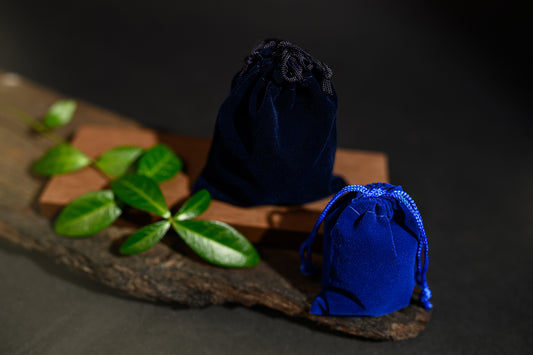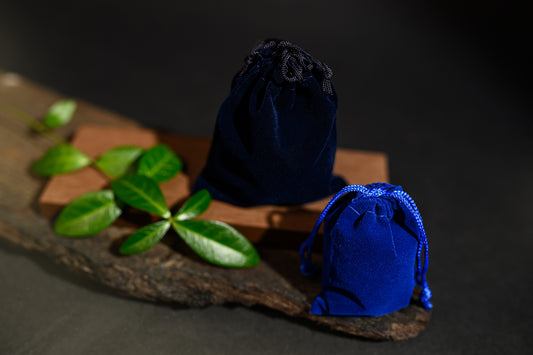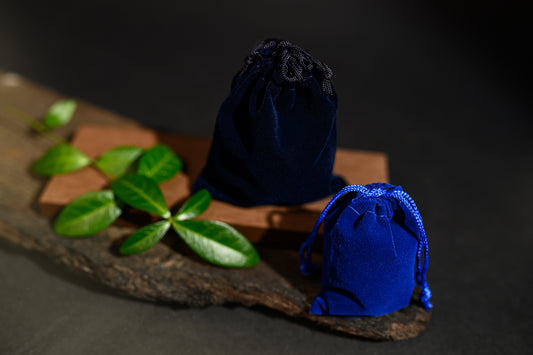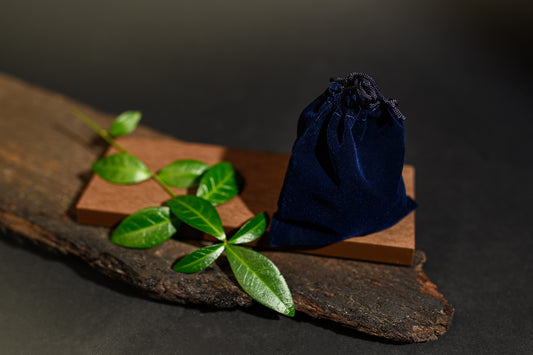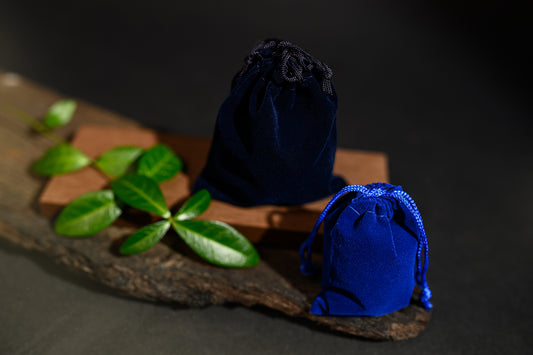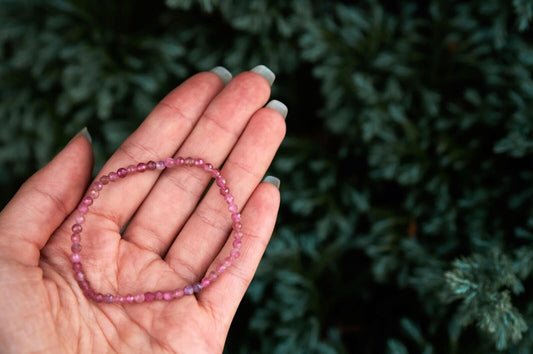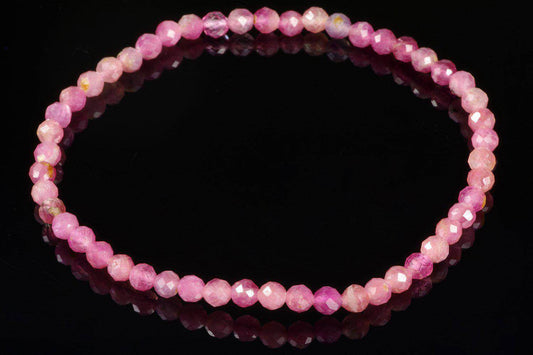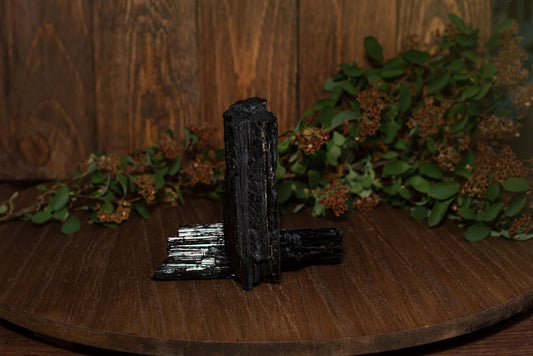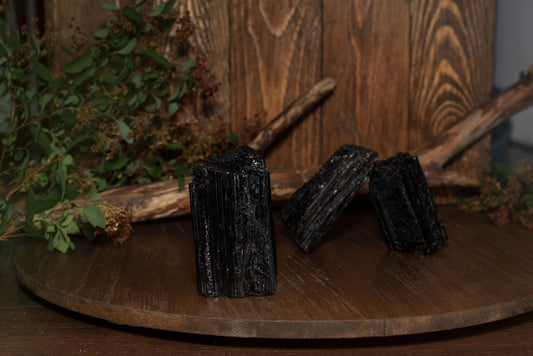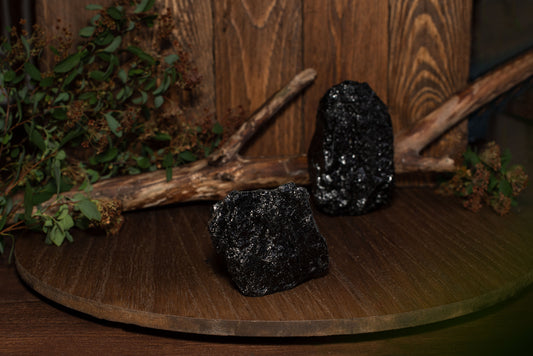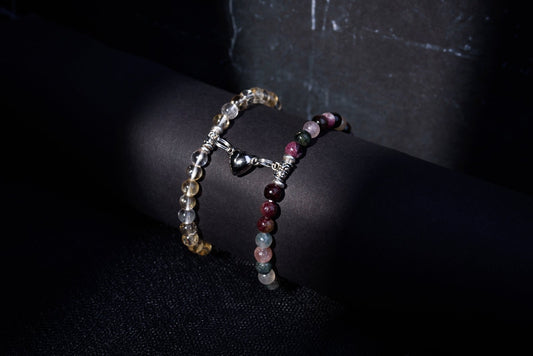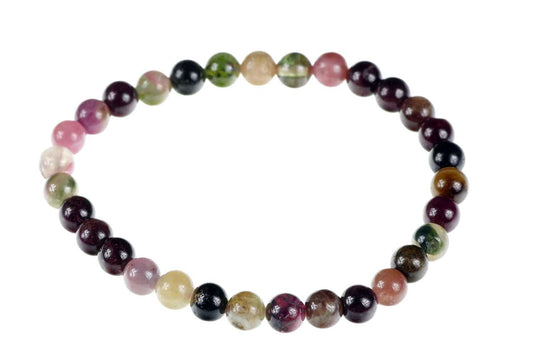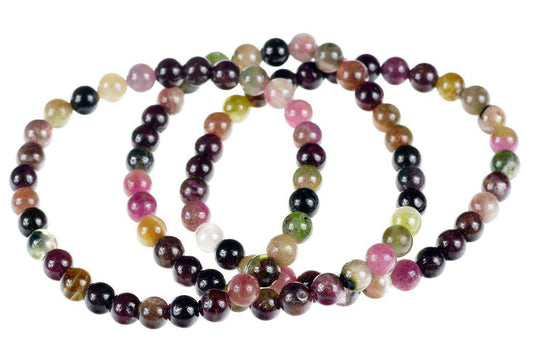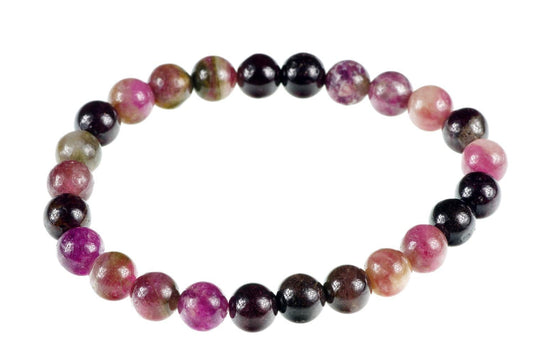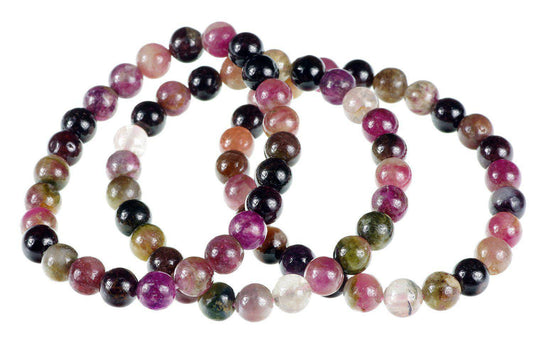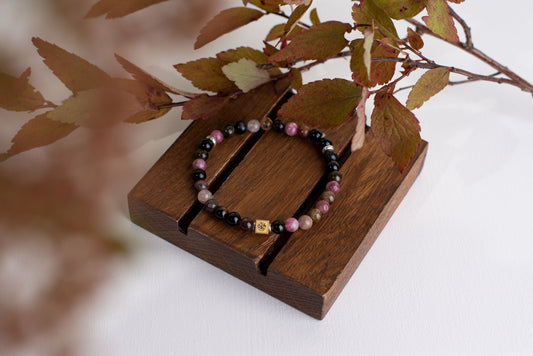收藏: Tourmaline
Tourmaline is a crystalline boron silicate mineral compounded with elements such as aluminium, iron, magnesium, sodium, lithium, or potassium. It is a semi-precious gemstone that occurs in a wide variety of colors. Its name comes from the Sinhalese word "turmali", which means "mixed". This reflects the fact that tourmaline is available in more colors than almost any other gemstone.
Tourmaline is distinguished by its three-sided prisms, meaning all tourmaline crystals are three-sided. It has a hardness of 7 to 7.5 on the Mohs scale, making it fairly resistant to scratching. It is also renowned for its piezoelectric properties, meaning it can become electrically charged when heated, cooled, or subjected to mechanical stress.
In metaphysical beliefs, tourmaline is often used as a chakra stone. The different colors of tourmaline are associated with different chakras. For example, black tourmaline is often associated with the root chakra, aiding in grounding and protection, while green tourmaline is linked to the heart chakra, promoting compassion, tenderness, patience, and a sense of belonging.
Tourmaline is also considered a powerful mental healer, transforming negative thoughts into positive ones. It is believed to promote inspiration and happiness, reduce fear, and build self-confidence among its users. It's also used to balance yin-yang energies, as it's considered a physical bridge to the spiritual.
In terms of its formation, tourmaline is usually formed in igneous and metamorphic rocks and veins in many different environments. It is often associated with quartz and potassium feldspar, and is structurally related to beryl, cordierite, and dioptase. It is mined in various locations around the world, with Brazil being one of the most significant sources. Other notable locations include Sri Lanka, Afghanistan, and parts of the United States, including California and Maine.
Tourmaline is distinguished by its three-sided prisms, meaning all tourmaline crystals are three-sided. It has a hardness of 7 to 7.5 on the Mohs scale, making it fairly resistant to scratching. It is also renowned for its piezoelectric properties, meaning it can become electrically charged when heated, cooled, or subjected to mechanical stress.
In metaphysical beliefs, tourmaline is often used as a chakra stone. The different colors of tourmaline are associated with different chakras. For example, black tourmaline is often associated with the root chakra, aiding in grounding and protection, while green tourmaline is linked to the heart chakra, promoting compassion, tenderness, patience, and a sense of belonging.
Tourmaline is also considered a powerful mental healer, transforming negative thoughts into positive ones. It is believed to promote inspiration and happiness, reduce fear, and build self-confidence among its users. It's also used to balance yin-yang energies, as it's considered a physical bridge to the spiritual.
In terms of its formation, tourmaline is usually formed in igneous and metamorphic rocks and veins in many different environments. It is often associated with quartz and potassium feldspar, and is structurally related to beryl, cordierite, and dioptase. It is mined in various locations around the world, with Brazil being one of the most significant sources. Other notable locations include Sri Lanka, Afghanistan, and parts of the United States, including California and Maine.

-
Crystal Pouch for Exploring the Unknown
常规价格 €34.99 EUR常规价格单价 / 单价 -
Crystal pouch for Gemini
常规价格 €31.99 EUR常规价格单价 / 单价 -
Crystal Pouch for Healing and Restoration
常规价格 €24.99 EUR常规价格单价 / 单价 -
Crystal Pouch for Magic and Manifestation
常规价格 €26.99 EUR常规价格单价 / 单价 -
Crystal Pouch for Protection and Grounding
常规价格 €33.99 EUR常规价格单价 / 单价 -
红碧玺手链 – 3-4mm
常规价格 €34.99 EUR常规价格单价 / 单价€49.99 EUR促销价 €34.99 EUR促销 -
Tourmaline – 0.1- 0.3kg
常规价格 €27.99 EUR常规价格单价 / 单价 -
Tourmaline – 0.3-0.6 kg
常规价格 €54.99 EUR常规价格单价 / 单价 -
Tourmaline – ~0,5kg
常规价格 €54.99 EUR常规价格单价 / 单价 -
电气石多色手链 – 8 毫米
常规价格 €39.99 EUR常规价格单价 / 单价€56.99 EUR促销价 €39.99 EUR促销 -
Tourmaline Earrings - Paw Charm
常规价格 €39.99 EUR常规价格单价 / 单价 -
Tourmaline multi-color bracelet with silver – Bonding with the heart
常规价格 €99.99 EUR常规价格单价 / 单价 -
电气石多色手链 – 6 毫米
常规价格 €41.99 EUR常规价格单价 / 单价€59.99 EUR促销价 €41.99 EUR促销 -
电气石多色手链 – 8 毫米
常规价格 €55.99 EUR常规价格单价 / 单价€79.99 EUR促销价 €55.99 EUR促销 -
电气石多色手链 – 8 毫米
常规价格 €62.99 EUR常规价格单价 / 单价€89.99 EUR促销价 €62.99 EUR促销 -
电气石多色手链 – 8 毫米
常规价格 €69.99 EUR常规价格单价 / 单价€99.99 EUR促销价 €69.99 EUR促销



